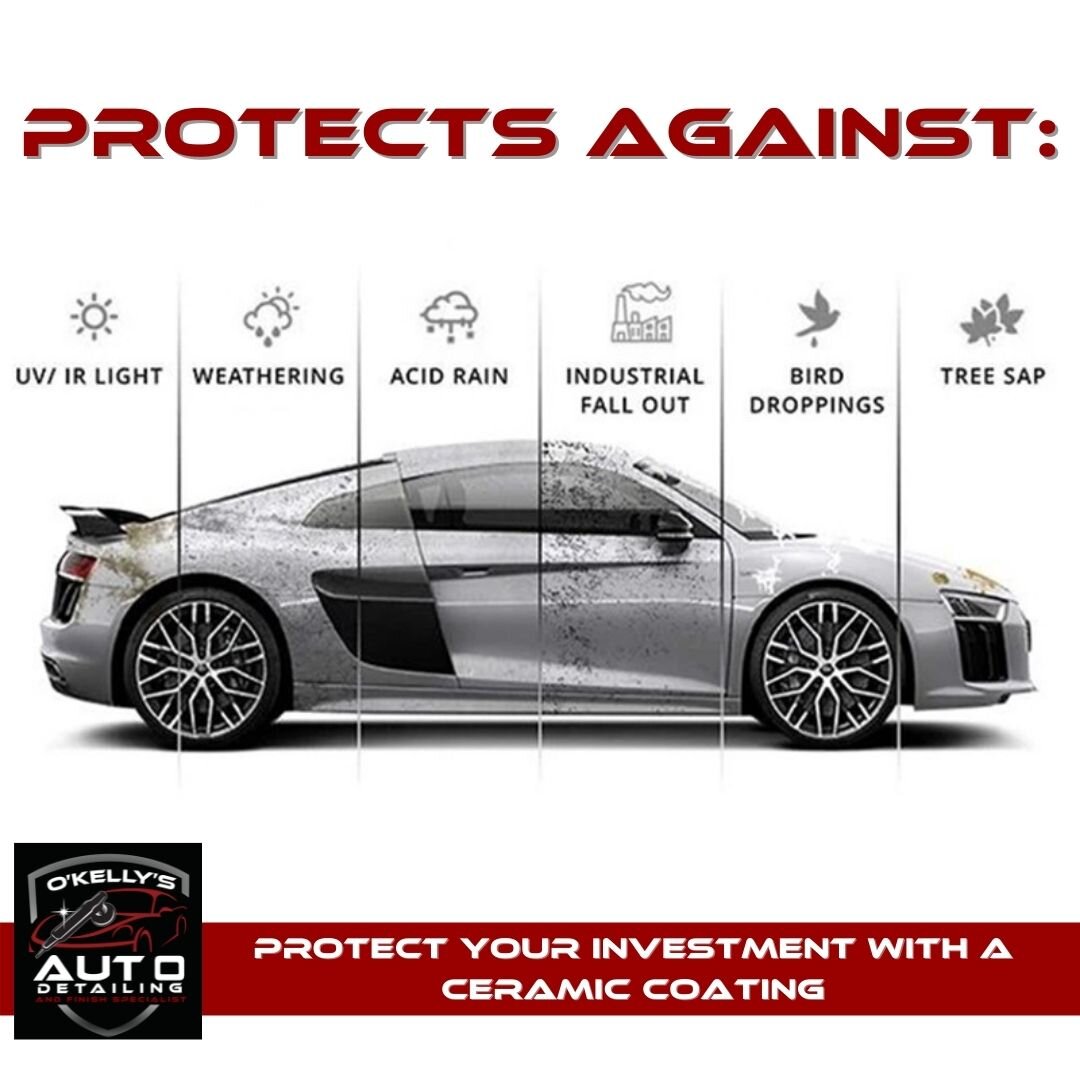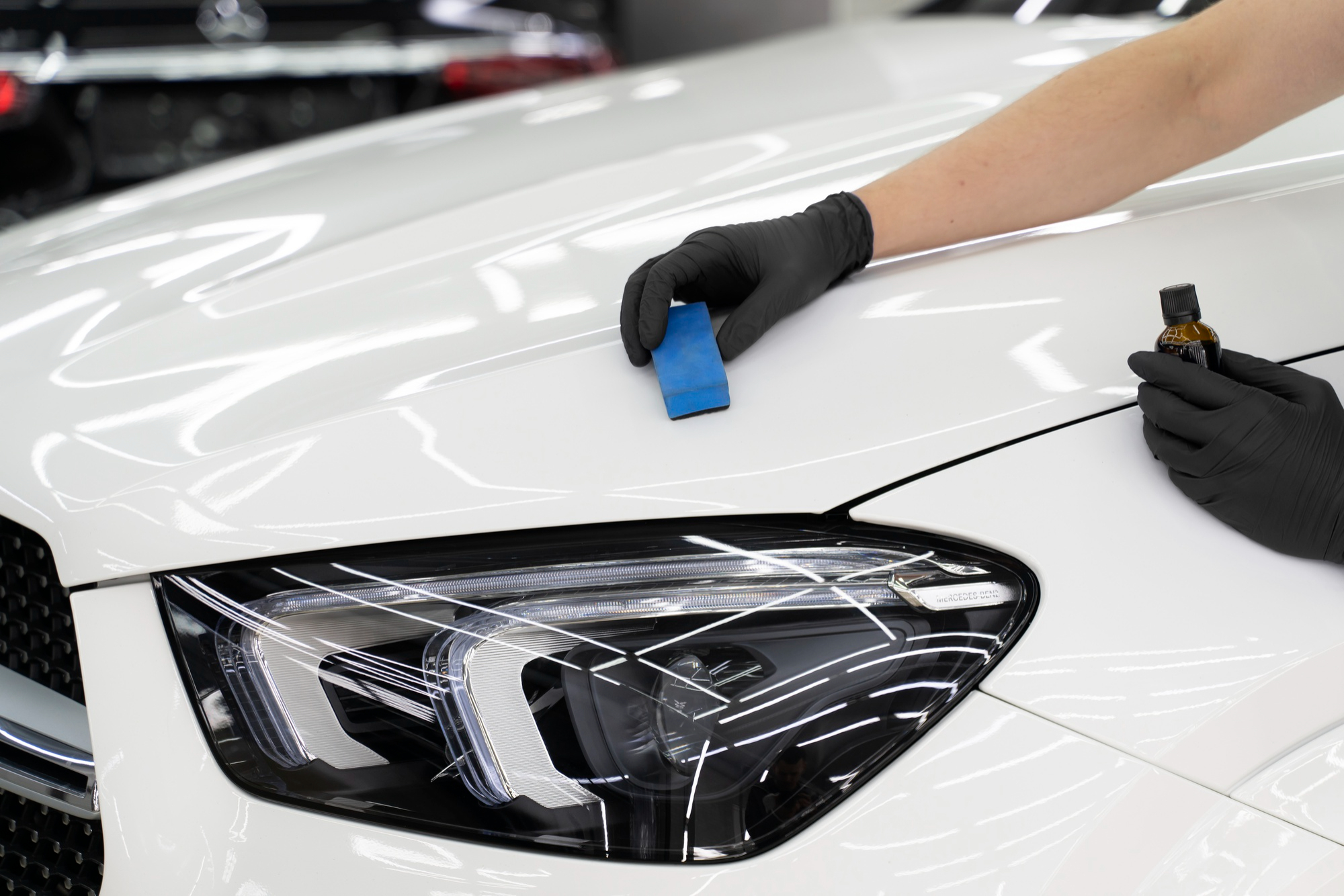Ceramic Coatings San Jose: Improve and Safeguard Your Automobile's Complete
Ceramic Coatings San Jose: Improve and Safeguard Your Automobile's Complete
Blog Article
Unveiling the Science Behind Ceramic Coatings: Exactly How Does It Job and Why Is It Above Traditional Alternatives?
Ceramic finishings have been gaining appeal in different markets for their extraordinary performance and resilience. Understanding just how ceramic layers job and why they exceed traditional alternatives is crucial for those looking for to improve the durability and resilience of their products.
The Chemistry of Ceramic Coatings
In recognizing ceramic finishes, diving into the intricate chemistry behind their make-up is crucial for realizing their performance and durability. Ceramic layers are mostly composed of silicon dioxide (SiO2), which creates a safety and strong layer when put on various surface areas. This chemical structure supplies remarkable resistance to warmth, chemicals, and corrosion, making ceramic layers extremely sought after for a wide variety of applications.
The chemistry behind ceramic coverings entails the formation of covalent bonds between silicon and oxygen atoms, creating a stiff network that enhances the finish's durability and longevity. Furthermore, the visibility of various other aspects such as titanium, aluminum, and zirconium more enhances the layer's properties, providing boosted hardness and adhesion to surfaces.
Understanding the chemical structure of ceramic coverings allows for the modification of formulas to suit specific demands, whether it be for vehicle, commercial, or residential purposes. By taking advantage of the power of chemistry, ceramic layers remain to pave the way for remarkable defense and efficiency in various industries.
Benefits of Ceramic Coatings

As an outcome, ceramic finishings make cleansing and preserving surface areas much easier and much less time-consuming. Overall, the plethora of benefits offered by ceramic layers make them a premium choice contrasted to traditional finishing techniques.
Exactly How Ceramic Coatings Bond
Ceramic finishings bond to surface areas via a procedure that entails molecular adhesion and chemical interactions. When a ceramic layer is applied to a surface, it develops a strong bond by chemically adhering to the surface at a molecular level.
Additionally, the chemical communications between the ceramic covering and the surface additionally boost the bond. ceramic coatings san jose. These communications permit the ceramic coating to create a seamless and continuous layer externally, supplying superb protection and longevity. Unlike traditional layers that might sit on the surface without completely bonding, ceramic finishes create a long-term bond that is immune to chemicals, UV rays, and extreme environmental problems

Basically, the bonding system of ceramic layers makes sure a efficient and lasting safety layer that surpasses traditional finishing alternatives. This superior bond contributes to the longevity, scrape resistance, and durability of ceramic coverings, making them a recommended selection for various applications.
Durability of Ceramic Coatings
The exceptional long life of ceramic finishes stems from their durable molecular adhesion and chemical interactions with surface areas, making certain a long lasting safety layer that exceeds conventional coating choices. find this When used, ceramic coverings create a strong bond with the substrate, developing a resilient barrier versus various environmental stress factors such as UV radiation, chemicals, and abrasions. This bond is so safe that it can hold up against the rigors of everyday usage without deteriorating or breaking down promptly.
Unlike conventional layers that may break down over time, ceramic finishings keep their integrity for a prolonged duration, providing long-lasting defense for the underlying surface area. The strong molecular structure of ceramic finishes resists chipping, fading, and peeling, making sure that the surface area continues to be secured and cosmetically pleasing for years to come. This sturdiness not just lowers the demand for constant reapplications but also saves time and money in the long run. Overall, the remarkable sturdiness of ceramic finishings makes them a remarkable option for securing a wide variety of surfaces in different applications.
Ceramic Coatings Vs. Typical Choices
In comparison to conventional finishing approaches, ceramic coatings provide an unique mix of durability and safety abilities that establish them apart in different surface area defense applications. Traditional options such as wax or sealants provide a temporary layer of protection that can diminish quickly, requiring frequent reapplication. On the other hand, ceramic layers create a solid bond with the surface area, producing a semi-permanent or long-term barrier that is highly resistant to abrasion, chemicals, UV rays, and severe temperature levels.
In addition, ceramic finishes use remarkable hydrophobic properties contrasted to typical finishes. The hydrophobic nature of ceramic coverings creates water to grain up and roll off the surface, carrying dust and impurities with it. This self-cleaning impact assists to maintain the surface area's tidiness and gloss for prolonged periods, reducing the demand for regular maintenance.
In addition, ceramic finishes have a thicker layer compared to typical choices, offering enhanced scrape resistance and protection versus minor influences. This durability makes certain resilient performance and aids preserve the visual charm of the dealt with surface for an extended duration.
Conclusion
In verdict, the scientific research behind ceramic coverings exists in their chemical structure my blog and bonding residential properties, making them exceptional to traditional alternatives. The benefits of ceramic coverings include boosted sturdiness and protection for surface areas. By understanding just how ceramic coverings job and their advantages over typical choices, one can make enlightened decisions when taking into consideration finishing options for various applications.
Unlike conventional layers that may sit on the surface area without totally bonding, ceramic finishings produce an irreversible bond that is resistant to get redirected here chemicals, UV rays, and severe ecological conditions.
The extraordinary longevity of ceramic finishings stems from their durable molecular bond and chemical communications with surfaces, making certain a long lasting protective layer that exceeds conventional covering alternatives.Unlike standard coverings that might weaken over time, ceramic coatings maintain their integrity for a prolonged period, supplying resilient defense for the underlying surface area.In contrast to traditional coating methods, ceramic finishings provide an unique blend of toughness and safety abilities that set them apart in different surface protection applications. By understanding how ceramic coverings work and their benefits over typical alternatives, one can make enlightened decisions when thinking about covering options for various applications.
Report this page